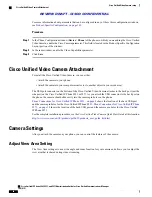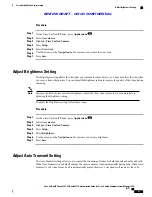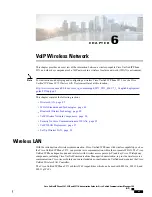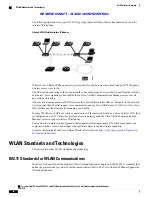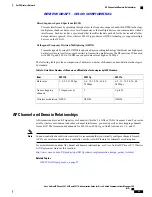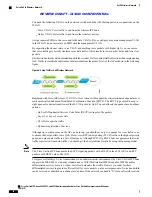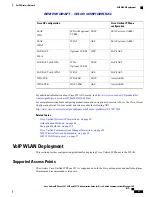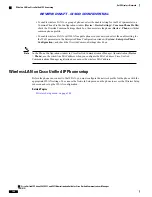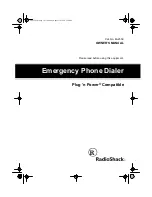
a call is one of the advantages of wireless voice, so RF coverage needs to include stairwells, elevators, quiet
corners outside conference rooms, and passageways.
To ensure good voice quality and optimal RF signal coverage, you must perform a site survey. The site survey
determines settings that are suitable to wireless voice and assists in the design and layout of the WLAN; for
example AP placement, power levels, and channel assignments.
After deploying and using wireless voice, you should continue to perform postinstallation site surveys. When
you add a group of new users, install more equipment, or stack large amounts of inventory, you are changing
the wireless environment. A postinstallation survey verifies that the AP coverage is still adequate for optimal
voice communications.
Packet loss occurs during roaming; however, the security mode and the presence of fast roaming determines
how many packets are lost during transmission.
Note
For more information about Voice QoS in a wireless network, see
Cisco Unified IP Phone 9971 Wireless
LAN Deployment Guide
at:
http://www.cisco.com/en/US/products/ps10453/products_implementation_design_guides_list.html
AP Association
At startup, the Cisco Unified IP Phone scans for APs with SSIDs and encryption types that it recognizes. The
phone builds and maintains a list of eligible APs and uses the following variables to determine the best AP:
•
Received Signal Strength Indicator (RSSI):Signal strength of available APs within the RF coverage
area. The phone attempts to associate with the AP with the highest RSSI value.
•
Traffic Specification (TSpec): Calculation of call limits and WLAN load balancing. The TSpec value
of each voice stream allows the system to allocate bandwidth to voice devices on a first-come, first-served
basis.
The Cisco Unified IP Phone associates with the AP that has the highest RSSI and lowest channel usage values
(QBSS) that posses matching SSID and encryption types. To ensure that voice traffic is handled properly,
you must configure the correct QoS in the AP.
Related Topics
Voice QoS in Wireless Network, on page 91
Security for Voice Communications in WLANs, on page 93
VoIP WLAN Deployment, on page 97
Voice QoS in Wireless Network
Voice traffic on the wireless LAN, like data traffic, is susceptible to delay, jitter, and packet loss. These issues
do not impact the data end user, but can seriously impact a voice call. To ensure that voice traffic receives
timely and reliable treatment with low delay and low jitter, you must use Quality of Service (QoS) and use
separate virtual LANs (VLANs) for voice and data. By isolating the voice traffic onto a separate VLAN, you
can use QoS to provide priority treatment for voice packets as they travel across the network. Also, use a
separate VLAN for data traffic, not the default native VLAN that is typically used for all network devices.
Cisco Unified IP Phone 8961, 9951, and 9971 Administration Guide for Cisco Unified Communications Manager 10.0
(SIP)
91
VoIP Wireless Network
AP Association
REVIEW DRAFT - CISCO CONFIDENTIAL




